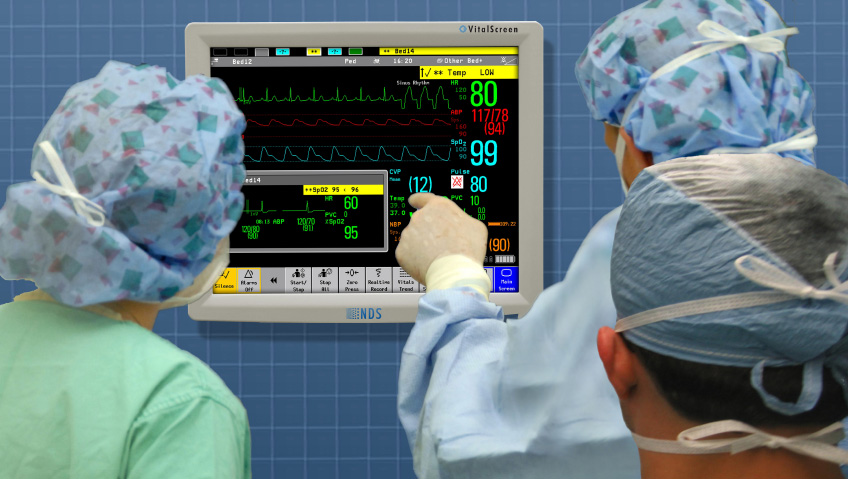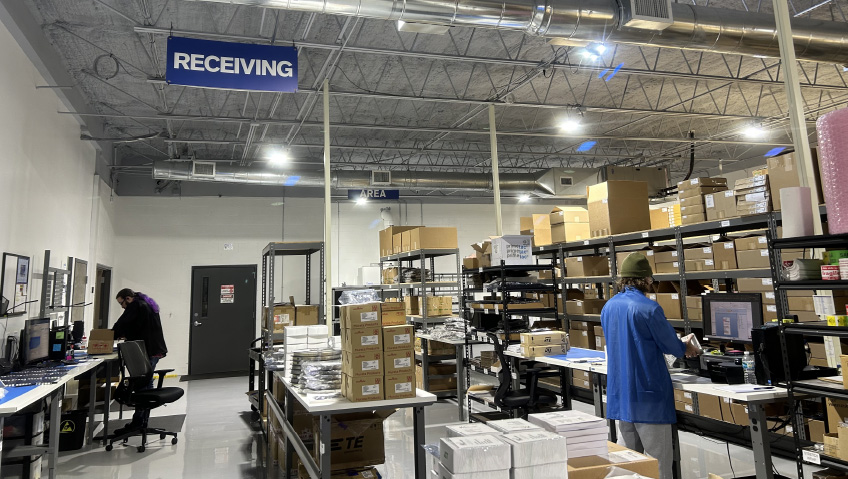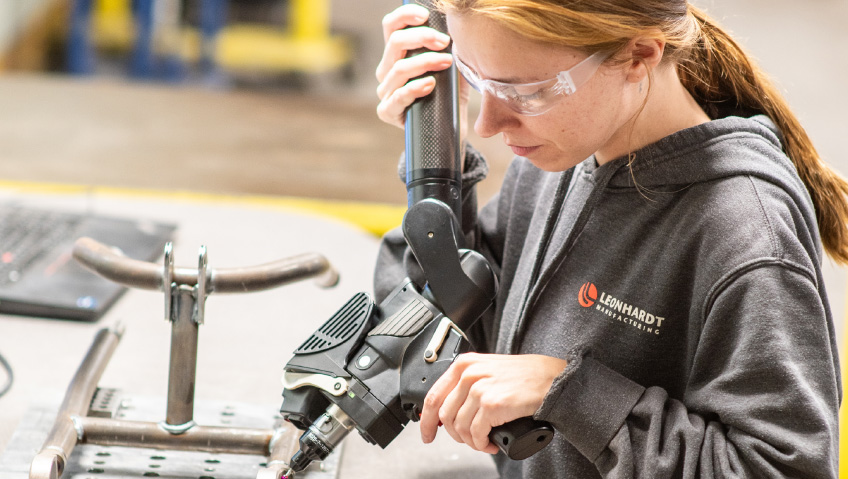Innovation has long been the backbone of the manufacturing industry. Big, established firms, generally keep a tab on the changes in available technology, and successful leaders adapt to survive, but at the small end, innovation is crucial. Success by doing what’s already being done is rare, unless you have some advantage in efficiency or quality, so start-ups often need something that really pushed the envelope to take off.
In recent years we’ve seen massive changes to the manufacturing process and even the very nature of manufacturing products itself. Often referred to as Industry 4.0, these advancements are largely fueled by the collision of digital and physical innovations that have by and large changed the game of what we can produce and how we do it.
Many of these available new technologies are very accessible to the small end. 3D printing is a perfect example, and access to AI, cloud computing and new concepts such as digital twin technology and becoming more and more accessible to Small and Med-Sized Enterprises (SMEs). All of these, whether combining with each as they often do or as standalone advancements, have made things smarter, better, and faster.
And on that note, there are all kinds of small but mighty companies out there applying these new technologies in ways that are pushing what’s possible in manufacturing. Before these new innovations become part of the mainstream manufacturing process they often start out in small shops or start-ups that push what can be done within the industry.
For instance, 3D printing, which started taking shape in 1981, has now advanced to the point where the European Space Agency (ESA) is theorizing that a moon base could be manufactured through 3D printing using local, lunar materials. As project head Laurent Pambaguian told the Solar System Exploration Research Virtual Institute, “Terrestrial 3D printing technology has produced entire structures. Our industrial team investigated if it could similarly be employed to build a lunar habitat.”
What would that look like on the moon? ESA’s partners have designed a weight-bearing dome with a cellular wall to help protect against space radiation and micrometeoroids. The hollow structure also has a pressurized inflatable interior to shelter astronauts and is built by layers of 3D-printed lunar soil with a 1.5-ton building block produced as a demonstration.
The process involves spraying a binding solution onto a simulated lunar sand-like material. This is mixed with magnesium oxide to transform it into paper for printing. Finally, a binding salt is the “structural ink” applied to convert the material to a stone solid.
Interesting, too, 3D printers can construct a structure at a rate of about 2 meters per hour, and next-gen designs are expected to move that rate to 3.5 meters per hour to finish a building in a week’s time.
A little closer to Earth, 3D printing can produce a wide array of products from shoes to prosthetics and hearing aids. This is particularly valuable to the automotive and aviation industry, where there is always a demand for a plethora of unique parts.
The next step in additive manufacturing might be objects that can change shape over time or on a trigger – effectively a fourth dimension to consider. Experiments with this “4D” printing has already begun, as we look for ways to create “smart” objects and materials. When we combine that flexibility with the advantages of cloud based-computing, what becomes possible?
The concept of using manufacturing resources in a service-oriented way over the Internet exists now, but we’ve only just scratched the surface of possibility. The Journal of Manufacturing and Materials reported on the economic and logistical impact that comes from being able to create a product or a part digitally and then sending it to a 3D printing company to produce. As University of Stuttgart, Germany researcher Felix W. Baumann wrote, “Resources like machines and software, as well as capabilities and abilities, become transparently available as services that customers or end users can use through the respective providers and pay for only the services they require momentarily.”
As the production of a part or product becomes decentralized, perhaps to be produced at one of many possible locations, how does that shape the new manufacturing process? What does this look like on the factory floor – or factory cloud for that matter? It all sounds like good news for smaller firms wanting to contribute big ideas.
Velo3D, based in California, is an on-demand metal manufacturer where customers can provide files and produce the part through 3D printing. From there, the company ships it out. No need for a 3D printer or other equipment on the customer’s side. For example, Velo3D printed heat exchangers for PWR Advanced Cooling Technology, an Australian company that manufactures heat exchangers, among other things, for high level motorsports like Formula 1 and NASCAR. Working with the design provided by PWR, Velo3D produced a heat exchanger that resulted in a 33% lower pressure drop versus the competition.
And while there may still a bit of caution among investment analysts about the industry of cloud manufacturing as whole, the potential for what it can make possible is tantalizing.
And remember that term digital twins mentioned earlier? Digital twins are all about overlaying a virtual environment on a physical manufacturing space. That means a manufacturer can look at its current facility, then mold it like so much digital clay to simulate what a process or task may look like before it’s physically carried out. This way, manufacturers can predict outcomes and catch potential risks before they turn up as real-life problems as they produce products for their clients.
For manufacturing, this comes to the forefront in constructing large objects, complex mechanisms, and production and design around power generation and transmission.
Judith Wiese, Chief People and Sustainability Officer at Siemens AG talked about the value of using digital twin technology in Forbes: “Digital twin technology provides a tremendous opportunity to achieve sustainability targets. Enable us to do more with fewer resources: from designing a new product to planning the production and manufacturing it – even all the way to repairing and recycling.”
There are also benefits to the environment that can come from this technology. Wiese says this application allows for “maximum flexibility for designing parts in a way that enables low-carbon repair and remanufacturing while still meeting the requirements for materials and processes. This thorough approach results in efficient and durable products.”
And while the digital twin space is impacted by the big players like Siemens, General Electric and Microsoft to name a few, there are also start-ups that are incorporating digital twin technology to offer more for their customers.
Take Allvision for example; based out of Pittsburgh, the company started in 2017 with a focus on applying digital twin technology to tackle areas like rail automation, transportation infrastructure and urban mobility. CTO Ryan Frenz describes it the work as, “Fixing our physical infrastructure is a complex problem. Most of our infrastructure is old enough not to have digital documentation, and aging and degradation cause as-built information to become invalid almost immediately. We can rebuild everything, so to ensure we’re spending money on the right things, we must understand what we have, where it is and what condition it’s in. This nationwide survey is a problem that can only be solved with remote sensing and automation.”
To accomplish this, Allvision combines data gathered by autonomous vehicles, GIS mapping platforms and satellite imaging with AI to create digital environments that they can provide on demand so that its partners in transportation can experiment with and work out potential solutions to issues or for planning of future projects.
And these are just a few examples of the way that companies are harnessing what is now possible for manufacturers.
While the industry has been through a lot of upheaval and challenges through the past few years, it’s exciting to consider what will change in the coming years. Think about things like the Augmented Reality and how that can impact not only the way manufacturers produce products but the way their customers interact with them. Then there is the rise of AI as a service where, like 3D printing, companies can shop from the tools that AI can provide for their products without having to actually develop their own AI.
This in turn enables the smaller start-up companies to really participate, and to potentially develop emerging technologies – to follow those creative ideas that drive us forward, creating positive change and a better future.






